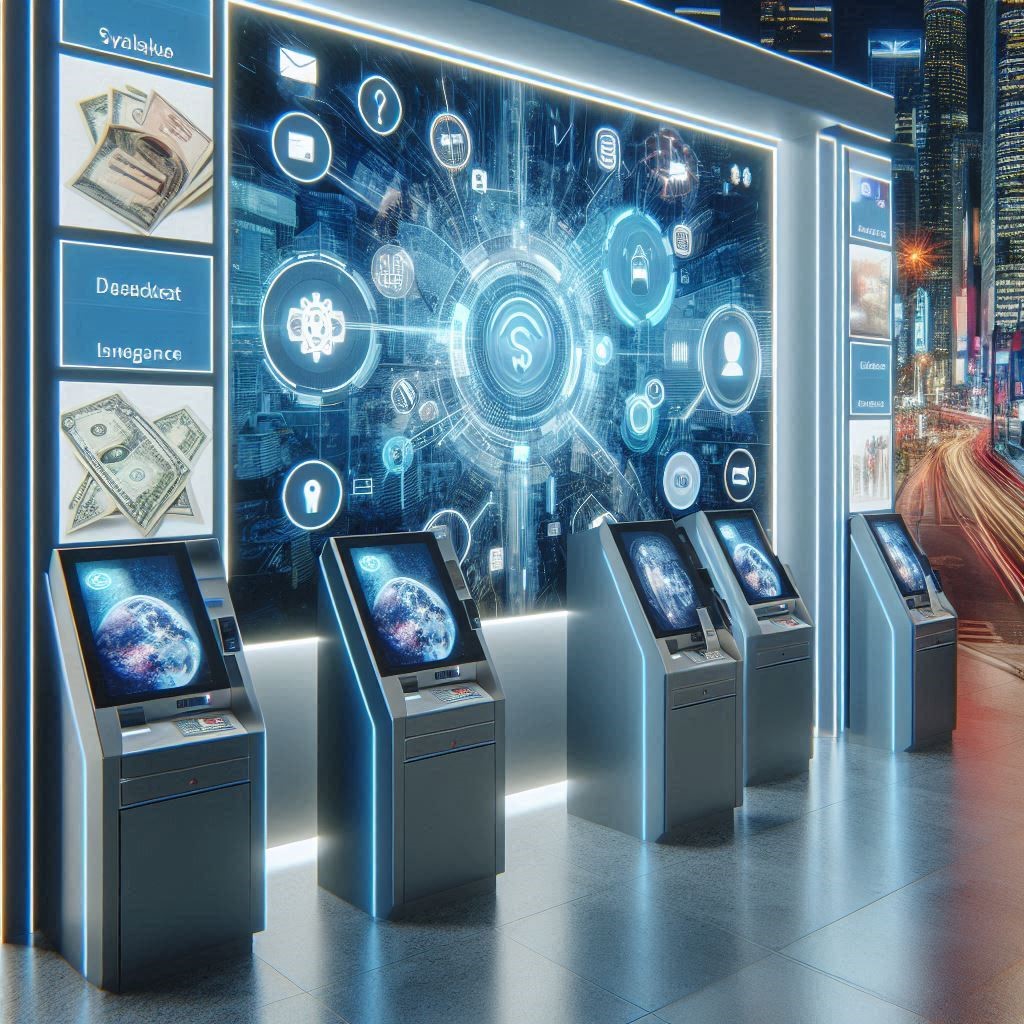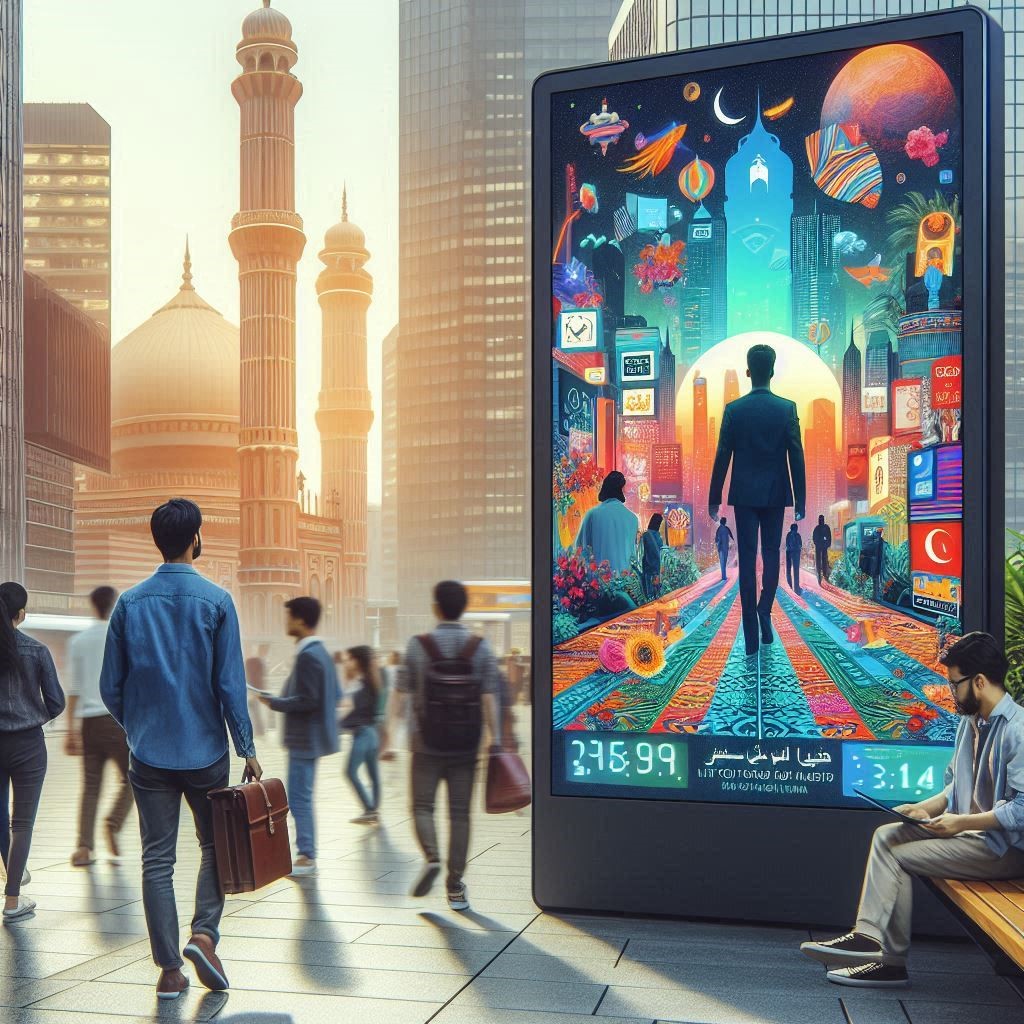The U.S. digital signage market is on the verge of a transformative growth phase as interactive solutions continue to capture the attention of businesses across multiple industries. From retailers and restaurants to healthcare and transportation, digital signage is increasingly becoming a crucial tool for enhancing customer engagement, driving sales, and improving overall experiences. With advancements in touchscreen technology, cloud-based solutions, and artificial intelligence (AI), digital signage in the U.S. is evolving to become more dynamic, customizable, and user-centric than ever before.
Digital signage refers to the use of digital displays—such as LED, LCD, or projection screens—to deliver content to targeted audiences. These displays are used in a variety of environments to convey information, promote products, or engage viewers with interactive content. Digital signage can range from simple video walls in shopping malls to interactive kiosks in retail stores, enabling businesses to communicate with customers in innovative ways.
One of the major developments in the digital signage space is the growing trend of interactive digital signage. Interactive displays allow users to engage directly with content, either through touchscreens, motion sensors, or voice recognition technology. This shift from passive content viewing to active user engagement is set to revolutionize the digital signage market in the U.S.

Driving Factors Behind the Growth of Interactive Digital Signage
Several factors are contributing to the rapid adoption and growth of interactive solutions in the U.S. digital signage market.
1. Increased Consumer Demand for Interactive Experiences
Consumers are becoming more accustomed to personalized, interactive experiences, both in-store and online. As smartphones and touchscreens become ubiquitous, shoppers are increasingly expecting the same level of interactivity from businesses’ physical environments. Interactive digital signage allows companies to deliver customized, engaging content that resonates with their target audience, driving customer satisfaction and loyalty.
In retail, for example, interactive displays enable customers to explore products, check prices, and learn more about features in an engaging, hands-on manner. This level of interaction not only enhances the shopping experience but also boosts the likelihood of a sale, as consumers feel more empowered and informed during the purchasing decision-making process.
2. Advances in Touchscreen and Gesture-Based Technology
One of the key drivers of the interactive digital signage trend is the continuous evolution of touchscreen technology. From simple point-and-click interaction to gesture-based controls and multitouch screens, businesses are now able to offer increasingly sophisticated ways for customers to interact with content.
For example, in shopping malls or airports, gesture-controlled displays allow users to explore directories or find products without having to touch the screen, providing a hygienic, hands-free option that is especially valuable in post-pandemic times. Moreover, AI-driven analytics can help optimize the interaction, adapting content based on user preferences, behavior, or demographics.
Download PDF Brochure @ https://www.marketsandmarkets.com/pdfdownloadNew.asp?id=513
3. Enhanced Content Delivery through Cloud-Based Solutions
Cloud-based technologies are playing an increasingly important role in the evolution of digital signage. Cloud-based systems allow businesses to remotely manage and update their signage content in real-time, across multiple locations, without the need for physical intervention. This enables companies to quickly push out new promotions, advertisements, or informational content with just a few clicks.
For interactive signage, cloud connectivity opens up further possibilities. Companies can personalize content for each display based on user interaction or pull in real-time data such as weather, news, and social media feeds. This level of dynamic, responsive content ensures that the messaging is always relevant and tailored to the audience.
4. Cost Reduction and Flexibility for Businesses
In the past, installing and maintaining digital signage could be expensive and complex. However, with the advent of more affordable digital screens, cloud-based platforms, and open-source software, interactive digital signage is becoming increasingly accessible to businesses of all sizes. This cost reduction makes it easier for small businesses, as well as large enterprises, to leverage interactive displays to enhance the customer experience.
Interactive kiosks, for instance, can be used to provide self-service options in fast-food restaurants, retail stores, and even healthcare facilities. These kiosks reduce the need for customer service personnel and allow customers to customize their orders or access relevant information on their own, all while improving operational efficiency.
5. Integration with Emerging Technologies
The rise of artificial intelligence (AI), augmented reality (AR), and Internet of Things (IoT) is also driving the evolution of interactive digital signage. AI-powered chatbots or virtual assistants integrated into digital displays can answer questions, assist with purchases, or provide additional information based on customer queries.
In addition, AR-enabled signage allows customers to engage with virtual content overlaid onto their physical environment. For instance, in fashion retail, AR-powered interactive signage lets customers visualize how clothing will look on them without having to try it on. These immersive experiences not only create a unique and engaging shopping experience but also encourage customers to spend more time interacting with the brand.

Key Industries Driving Interactive Digital Signage Adoption
The interactive digital signage market is expanding rapidly across several key industries in the U.S. These include:
1. Retail and E-commerce
Interactive digital signage has found a natural home in the retail sector, where it enhances customer engagement, promotes products, and supports point-of-sale activities. Interactive screens in stores allow customers to browse inventory, check product reviews, and even customize products before making a purchase. Retailers are also leveraging interactive displays for in-store navigation, helping customers locate specific products within large stores.
Moreover, AR technology is being used in retail environments to provide virtual try-ons, allowing customers to see how products like clothing, makeup, and accessories will look on them before buying.
2. Healthcare and Hospitals
In healthcare, interactive digital signage is transforming the way patients and visitors navigate hospitals, clinics, and medical facilities. Wayfinding kiosks, patient check-in screens, and health information displays are increasingly common in hospitals, helping to streamline the visitor experience and reduce wait times. Additionally, digital signage is being used for patient education, providing interactive tutorials and resources on health topics and treatments.
3. Transportation and Public Spaces
Interactive digital signage is playing a crucial role in enhancing the passenger experience in transportation hubs such as airports, train stations, and bus terminals. Flight information displays, interactive maps, and wayfinding tools ensure that passengers can easily navigate these spaces, reducing confusion and improving efficiency. These displays can also be used for real-time updates, such as delays, gate changes, or weather-related information.
In public spaces, interactive digital signage is being deployed in museums, galleries, and tourist attractions, offering engaging content and dynamic experiences for visitors. These interactive displays can provide in-depth information about exhibits, offer multilingual support, and even direct visitors to key points of interest.
4. Corporate and Business Settings
In corporate offices and business environments, digital signage solutions are increasingly being used to display company news, announcements, and employee engagement content. Interactive touchscreens allow employees to quickly access information such as meeting schedules, internal news, or company resources.
Furthermore, interactive video walls are enhancing presentations and meetings, enabling businesses to create more dynamic, engaging content that can be manipulated in real-time by multiple users.
The Future of the U.S. Interactive Digital Signage Market
The future of the U.S. digital signage market looks exceptionally promising. As businesses continue to prioritize customer engagement and personalized experiences, interactive digital signage will become even more integrated into daily operations. Market analysts predict that the U.S. digital signage market could exceed $8 billion by 2026, with interactive solutions representing a large share of this growth.
Key trends that will shape the future of the market include the integration of AI and machine learning for more personalized, predictive interactions, as well as the increasing use of cloud-based platforms for seamless, remote content management.
With the rise of 5G technology, AR experiences, and multi-sensory displays, interactive digital signage will continue to evolve, offering businesses even greater opportunities to connect with consumers in more immersive and engaging ways.
The U.S. interactive digital signage market is poised for rapid growth as businesses across industries embrace the power of interactive technology to enhance customer engagement, streamline operations, and create memorable experiences. As advancements in AI, cloud-based solutions, and touchscreen technology continue to push the boundaries of what digital signage can do, the future of this market looks bright—ushering in a new era of dynamic, customer-centric marketing and communication.
